When a foreign substance like sand or ionic compound salt is added to ice, the water molecules cannot attach to make ice as fast when the temperature is zero degrees. This gives time for the existing ice to melt, providing time for the existing ice to melt, after raising the temperature just slightly. It causes what is called the “freezing point depression”. Kissner says, “Salt is the primary component in most of today’s ice melter products. Rock Salt, Calcium Chloride, Magnesium Chloride, and Potassium Chloride all contain a considerable amount of salt in them.” http://www.kissner.com/why-does-salt-melt-ice/. The salt makes it harder for the water molecules to bond together. Even though NaCl, regular table salt, will melt the ice, cities use Calcium Chloride CaCl2 a different type of salt, on roads because it can break down into three ions, more than table salt – more ions more melting.
For an experiment, In one bowl have ice cubes and sprinkle over table salt at the same time in a second bowl have ice cubes and sprinkle over road salt (Calcium Chloride). Observe to see which bowl melts first. Always be careful when walking on the ice. Make sure your boots have good grips on the bottom!
]]>Merry Christmas Everyone!
]]>
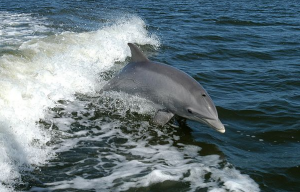 Dolphins on Finding Their Food: DolphIns have approxImaTely 199 TeeTh and are In dIfferenT colors (their body, that is, not their teeth)— WhITe, Black, Grey, Brown, YeLLow and even Pink and Blue!Like human beIngs, DolphIns are MammaLs and Nurse TheIr young wITh TheIr MiLk. They swIm In “schools”, also called “pods”, doIng some ThIngs on TheIr own, Though mosT ofTen are very socIaL – some havIng a shy characTer, and some beIng ouTward and enTerTaInIng, each wITh a unIque personaLITy. Schools can be aT Times Found In The hundreds; Though River DolphIns are found only a handful In number. (SpIlsbury; p. 6)They assIsT each oTher In FIndIng Food, carIng and LookIng ouT For One AnoTher and each oTher’s young. (p. 7)
Dolphins on Finding Their Food: DolphIns have approxImaTely 199 TeeTh and are In dIfferenT colors (their body, that is, not their teeth)— WhITe, Black, Grey, Brown, YeLLow and even Pink and Blue!Like human beIngs, DolphIns are MammaLs and Nurse TheIr young wITh TheIr MiLk. They swIm In “schools”, also called “pods”, doIng some ThIngs on TheIr own, Though mosT ofTen are very socIaL – some havIng a shy characTer, and some beIng ouTward and enTerTaInIng, each wITh a unIque personaLITy. Schools can be aT Times Found In The hundreds; Though River DolphIns are found only a handful In number. (SpIlsbury; p. 6)They assIsT each oTher In FIndIng Food, carIng and LookIng ouT For One AnoTher and each oTher’s young. (p. 7)
DolphIns keep warm because of a layer of Blubber, also called FaT, under The skIn. In contrast, to stay warm, human beIngs have warm foods lIke gInger, blankeTs, Wood Fires, and each oTher! InTeresTIngly, The Bones ThaT make up a DolphIn’s skeLeTon, are Filled wITh FaT and Oil, causIng TheIr bones To be boyoanT gIvIng Them an easIer Time To FLoaT. That is so cool! They move approxImaTely 10-15 km per hr Through The waTer.
Range: Eg. SpoTTed DolphIns have A few hundred Miles / 400 km DIameTer of a Circular Range, TravelIng ~ 45 mIles / 70 km per day. (SpIlsbury; p. 9)
Their buoyant bones allow them to Stay Under waTer abouT 10 mInuTes aT a Time. Then They surface To breaThe aIr Through TheIr blowhole, whIch has a muscular skInflap ThaT closes for when underwaTer (SpIlsbury; p.11). Using EchoLocaTIon for finding Food, they eat SquId, KrIll, anchovIes, and mackeral, (small Fish mosTly). It is InTeresTIng ThaT They eaT JellyFIsh wIThouT beIng harmed by Them – maybe only The small ones! Because They have such good hearIng usIng echoLocaTIon, ThIs sense Is used more Than sIghT for FIndIng Food. RIsso’s eaT mosTly squId. Other River DolphIns eaT Clams, Crabs and Fish. (SpIlsbury; p. 12) UsIng The nasal sacs found jusT behInd The BraIn, The dolphIn sends ouT sound waves called “EchoLocaTIon” ThaT surround and sIze up an objecT, fIgurIng ouT ITs generaL weIghT and sIze and shape, deTermInIng IF IT Is a Good Food Source. (SpIlsbury; pp. 13, 14) SpiLsbury, RIchard and LouIse; A SchooLoF DoLphIns; Illinois: 2004 HeInemann Library; www. HeInemannLIbrary .com)
Q – What is it that causes a Dolphin to have boyount bones? That is, what elements cause their bones to be this way? WHat other sea mammals have boyount bones?
]]>
Charles Darwin coined the term “Natural Selection” which means that as nature changes, the organisms that are able to adapt the quickest are the ones that get to access necessary resources and are able to survive. Organisms that are able to adapt are the ones that can continue to reproduce while those that are not able to adapt will eventually die.
Materials
3 Clear Plastic Cups
Water
Cotton Balls
Vegetable Oil
Instructions
- Fill each cup with water.
- Place a dry cotton ball in the water and observe what happens.
- Dip a cotton ball in oil, making sure that half of the cotton ball remains dry.
- Place it in a second cup and observe what occurs.
- Place a cotton ball in oil, completely covering the entire cotton ball.
- Place it in the third cup and observe what happens.
What’s Happening?When the cotton ball is not covered in oil, it sinks to the bottom of the cup. When it has some oil on it, the oily portion flips to avoid the water but when the cotton ball is completely covered in oil it is able to float. With Ocean Birds, they produce oil that Coats their Feathers and this allows them to float on top of the water. If they did not have this oily coating they would sink like the cotton ball did. If they only had the oily coat on the feathers that were in the water, then they may have a hard time not flipping over. By having all of their Feathers coated in oil, they are able to comfortably and safely float on top of the water until they are ready to dive under to catch fish.
Interested in how animals adapt and evolve over time? Check out these neat online resources!
- http://scienceline.ucsb.edu/getkey.php?key=427
- http://listverse.com/2013/03/25/10-weird-cases-of-incredible-animal-evolution/
And Here is one from our classroom at Science-Lessons.ca: a 52-Card Playing Deck for Ocean Learning, includes 4 several games and completely downloadable for Print and Cut-out – Crazy Starfish! Go Snorkeling! Sea Cluster! and ?Hypothesy?: Ordering: Ocean Science: Ocean Creatures Playing Cards
Also, an updated and more improved version with Teachers Pay Teachers!
]]>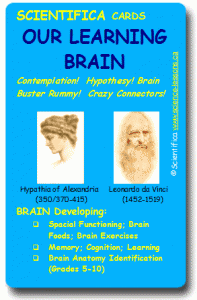 To Hypothesize; to speculate; to believe especially on uncertain or tentative grounds; the first step in the scientific process of providing proof of invented theory. To Think; Famous Genius Hypathia of Alexandria (350/370-415 A.D.) was noted for saying, “Reserve your Right to Think, for to think wrongly is far better than to not think at all”.Our awesome Science Learning Book Our Learning Brain is Now Available in Printed Book Full Color with Amazon Books.
To Hypothesize; to speculate; to believe especially on uncertain or tentative grounds; the first step in the scientific process of providing proof of invented theory. To Think; Famous Genius Hypathia of Alexandria (350/370-415 A.D.) was noted for saying, “Reserve your Right to Think, for to think wrongly is far better than to not think at all”.Our awesome Science Learning Book Our Learning Brain is Now Available in Printed Book Full Color with Amazon Books.
Our Learning Brain includes these 4 Great Games: Brain Buster Rummy; Crazy Connectors! (like Crazy 8’s); Contemplation! (like Solitaire and Patience); and Hypothesy! (An Old-Fashioned A & Q Game). Cards are similar to a traditional playing deck of cards, with 4 suits of 13 cards, all with different facts about each category; and 4 card games; Suitable for Grades 5-10. The games themselves, are easily comprehensible for the earlier grades, while the species identification aspects are brain teasers for the older grades.
CAUTION: Once Students begin, they cannot stop Playing!
Now Available in Printed Book Full Color with Amazon Black & White Version; Printed Book Form Amazon (Click on link for Book Form ordering)
Tasks include achieving Brain Anatomy Identification; Learning . All Science Activities and Games are designed to achieve Elementary and Junior High School Level Science Requirements also including aspects of Mathematics & Communication. Scientifically Proven to Increase Memory & Cognition; Understanding physical properties, structures and changes of Earth materials and Living Organisms and the properties of rocks, soil, water, and air; Identifying and categorizing living organisms; Understanding how components, structures, organizations, and interconnections describe systems; Adding, Reasoning, memory problem solving, and communication; Work collaboratively, find solutions and perform tasks…
And also available through our Blue Butterfly Books site!
Have a Very Merry Christmas! Happy Hannukah! and a Warm Wonderful Winter Solstice!
]]>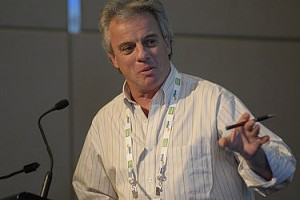 From mad scientists, to lunar landings, to outrageous weapons, science is gracing the big screen. But just what’s plausible, capable, or already happening?
From mad scientists, to lunar landings, to outrageous weapons, science is gracing the big screen. But just what’s plausible, capable, or already happening?
Join one of Canada’s best-known science journalists on November 22nd when the host of CBC’s Quirks & Quarks….http://thevic.ca/item/quirks-and-quarks
For more info about Bob McDonald’s CBC Radio show, visit here: http://www.cbc.ca/quirks/host/. Bob’s Book is entitled:
Measuring the Earth with a Stick: Science as I’ve seen it:
http://www.kidsbooks.ca/The-Quirks-&-Quarks-Guide-to-Space/Product.aspx?ProductID=121009&DeptID=0
http://www.cbc.ca/quirks/books/
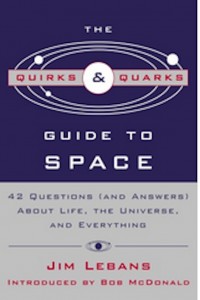 His book, which was short-listed for the Canadian Science Writers Association Book Award, is a collection of essays reflecting on his 25 years as a science journalist. Bob also hosted and wrote a children’s TV science series, Heads Up!, which ran for 3 seasons on TVO and the Knowledge Network. In addition, he is Chairman of the Board for Geospace Planetarium. Here is Bob’s Science Blog: http://www.cbc.ca/quirks/host/
His book, which was short-listed for the Canadian Science Writers Association Book Award, is a collection of essays reflecting on his 25 years as a science journalist. Bob also hosted and wrote a children’s TV science series, Heads Up!, which ran for 3 seasons on TVO and the Knowledge Network. In addition, he is Chairman of the Board for Geospace Planetarium. Here is Bob’s Science Blog: http://www.cbc.ca/quirks/host/
For info on Our Awesome Science Learning Lesson Plans, Games and Activities, feel free to visit here:
http://www.science-lessons.ca/lesson-plans/index.html
http://www.science-lessons.ca/games/brain.html
]]>
1. Sea Turtles live in all the world’s oceans except the ____________.
2. Adult Turtles swim in shallow lagoons, feeding mostly on various species of ______________.
3. Clownfish are native to the warm waters of the ___________ and __________ Oceans.
4. _________ have two stomachs and therefore can hunt for larger animals than their mouth could otherwise handle.
5. Angelfish are ____________ animals, because they hide amongst the crevices of the reef by night.
6. Through the 19th century, the word “kelp” was closely associated with seaweeds that were fired to obtain __________ (primarily sodium carbonate).
7. Manatees use taste and smell, in addition to sight, sound, and touch, to_________.
8. Salmon eggs usually range from _____________ in color.
9. Clownfish are one of the few fish that are safe from sea ______________.
10. The ___________ is a marine mammal, the heaviest member of the weasel family.
11. When eating, the otter first uses ___________ to dislodge prey and to open shells.
12. Seahorses have an equine profile, meaning they look sort of like ________.
13. ____________ have vibrant rainbow colors and deep, sideway-flat bodies.
14. Before spawning, salmon may grow a hump and grow canine teeth like a dog, developing a_______, a curve in the jaws.
15. Like___________ , anemones have stinging cells.
16. When a shark is resting, it does not use its nostrils, but rather, its___________, tiny holes behind each eye.
17. A _________tail is paddle-shaped.
18. ________ are large seaweeds belonging to the brown algae family.
19. _________ are pink and silver fish from the Atlantic and Pacific Oceans, and the Great Lakes.
20. Although corals can catch small fish and animals, they obtain most of their nutrients from photosynthetic unicellular_______.
21. __________ typically have five “arms” which radiate from a central disk.
22. __________ are slow-moving and live in warm, shallow, coastal waters, surviving above 15°C.
23. ____ ________ are related closely to coral and jellyfish.
24. _________ have proven problem-solving skills, social complexity and curiosity.
25. Coral have______ ; each one being like a tiny upside-down jellyfish with a shell.
26. ____ _______ “bob” around in sheltered areas such as sea grass beds, coral reefs, or mangroves.
QUIZ ANSWERS:
1. Arctic Ocean
2. Seagrass
3. Indian and Pacific
4. Sea Stars
5. Diurnal
6. soda ash
7. communicate
8. orange to red
9. Anemonae
10. sea otter
11. rocks
12. horses
13. Angelfish
14. Kype
15. Spiracles
16. jellyfish
17. manatee
18. Kelp
19. Salmon
20. algae
21. Starfish
22. Manatees
23. Sea Anenomae
24. Sharks
25. Polyps
26. Seahorses
If you really want to give yourselves an elementary science Brain-Squeeze this summer, here is an Oceans Quiz from National Geographics: http://ocean.nationalgeographic.com/ocean/ocean-extremes-quiz/
And Here is one from our classroom at Science-Lessons.ca: a 52-Card Playing Deck for Ocean Learning, includes 4 several games and completely downloadable for Print and Cut-out – Crazy Starfish! Go Snorkeling! Sea Cluster! and ?Hypothesy?: Ordering: Ocean Science: Ocean Creatures Playing Cards
Also, an updated and more improved version with Teachers Pay Teachers!
]]>Concretions are rounded rocks embedded in layers of stone in sedimentary rocks, often they are harder than the surrounding stone, and whether out of the host rock; http://www.rocksforkids.com/R&M/concretions.html#Septarian_Nodules. They are a hard mass of sedimentary rocked compacted tightly at one time, by way of the precipitation of mineral cement, that has grown spaces between the sediment grains – outward in 7 directions. The sedimentary rock nodules are kind of mineralized calcified encased “mud”, made up of calcite and ironstone. There are 2 basic stages of development that are shown in the photos here:(http://en.wikipedia.org/wiki/Concretion; Moeraki Boulders; Septarian Nodule; photos drawn March 17, 2014 ) caused by networks of cracks in which the minerals, usually calcite (CaCo3 – Calcium Carbonite – in the Periodic Table, Calcium, Carbon and Oxygen) been deposited into the solution before hardening. Prior to the depositing of minerals, the cavities are filled with ironstone; (Melody, EARTH-LOVE Publishing House; Love is In The Earth – Kaleidoscope pictorial, 1998; pp. 282-283).
On a metaphysical level, these beauties are said to filter dreams and keep only good ones around a person, such as is with dream catchers, and thus good to keep near a sleep space. Also used to facilitate neuro-linguistic programming, instilling patience, endurance and tolerance to a person; freedom of body movement supporting the body’s self-healing abilities. (Melody; 1998). Melody, a most fantastic source in the world of minerals and crystals, says it can be placed in the centre of Medicine Circles, facilitating Connection and Harmony.
Questions to ask Learners in your Classroom: What causes minerals to migrate to a centre and become harder? What are their true origins? Can you find septarian nodules in your backyard? Or are they only in one part area of the Earth?
For Fun Learning and Teaching activities and games, feel free to visit here:
http://www.science-lessons.ca/games/mammals.html
http://www.science-lessons.ca/games/space.html
http://www.science-lessons.ca/games/weather8.htm
http://www.literature-enrichment.com/
Interesting links from the Victoria Lapidiary Rock Show we visited:
Victoria Lapidiary and Mineral Society: http://www.islandnet.com/~vlms/.
Fossil Grotto: http://www.caves.org/grotto/ccg/um/2012_03_um.pdf.
Stone Haven Gems: http://www.stonehavengems.com/septarian-nodule-pebble/.
]]>
Making your own Orgonite Muffins are Easy to Make at in-class or at home, Materials needed are:
Beezwax or EcoEpoxy Resin
Large Stir Spoon
Small crystals, even the smallest is great
2 kinds of scrap metals such as copper shavings (look around in your Mom and Dad’s garage or ask your teacher or local welder for some scraps)
a bit of paper and tape
Muffin Pan
For more instructions, visit here: http://beeswax-orgone.com/make-an-orgone/; and here: http://www.orgonite.info/how-to-make-orgonite-hhgs.html.
Orgonite Generators are said to turn negative energy into positive energy, purify the atmosphere, detoxify water, ends drought, help plants grow better, repel pests, require less water, Inspire a pleasant demeanor and balanced, happier moods, and help awaken your innate senses. We first made one with paper and a bit of goldleaf, our compass, ruler and marker – drawing on the paper, a geometric flower of life, adding positive words. We felt it generating positive energy and so thought it was an orgonite generator. To truly test our generator we would have to first make a blank one with the gold, one with the flower of life, one with tiny words on it, and one without, and test each one in the garden to see if it attracts life, or if the flowers around it perk up! Then, to document all of that! But then, we read that Reich’s devices were said to “generate” only when in a container. Otherwise they only “accumulated” the energy – hence, we believe what we made is an orgone accumulator (adding together inorganic and organic materials). Besides not being contained in a container with beeswax or EcoEpoxy, ours only had one kind of metal, and had no crystals. So our next step is to make the Eco-Epoxy muffins!
Here is a photo of one of Reich’s generators designed to do cloudbusting and make rainfall. (Photo: Extracted January 28, 2014 from: www. Wikipedia. Org / wiki / orgone.) People who make homemade orgonite generators have we believe, good intentions – putting positive feelings into our environments. Though, unfortunately, most generators have been made with epoxy fiberglass resin, that is reportedly not very good at all for the environment, in general. Thus, our personal concern is whether crystals “like” being encapsulated in epoxy (as it is also apparent that crystals are living and have feelings! Our sense is they would not like being encapsulated in a non-eco-friendly substance. So…..we searched and found alternatives that are earth-friendly. 3 Eco-alternatives:
1. Beeswax. Yellow Gold in color. http://beeswax-orgone.com/make-an-orgone/.
2. EcoEpoxy. Clear in color and others. http://www.earthsafefinishes.com/EcoEpoxy.html.
3. Ecopoxy. Amber in color. http://ecopoxysystemscanada.com/.
http://www.westwindhardwood.com/products/ecopoxy/intro.php.
Our friend who makes generators at home, says, if you are wondering if an orgone device works or not try testing it on something that can re-act to your orgone device like a plant or lizard or other animal. Testing may take minutes, hours, days or a week for optimal results. Try taking digital pictures of the subject being tested to document it. He says his generators makes his plants grow faster and greener and attracts interesting wildlife like frogs and lizards. He also writes words on his like Love Peace Harmony Compassion Forgiveness Happiness and Oneness.
And we like this person’s Kirlian photos (infrared photo-technology), also forwarded to us by our friend Kevin. Way cool. http://www.orgoniseafrica.com/blog/improving-orgonite. Are we, as human beings, orgonite generator? If we have contained within our bodies, more than one metal, organic and inorganic material, would we not also orgonite generators? We would say yes, to an extent, though we do not contain non-carbon based crystals. Crystals, are a different kind of life form on Planet Earth. What about if wear a crystal, then? Hmmmmm. Good Science Questions. Be sure and clean and care for your crystal, if you choose to wear one. We believe Crystals have Feelings too!
Other sources of information on Orgone Generators:
For more interesting and Fun Science Activities and Games, feel Free to visit:
http://www.science-lessons.ca/games/weather3.html
http://www.science-lessons.ca/games/brain.html
http://www.science-lessons.ca/games/space.html
http://www.science-lessons.ca/games/ocean.html
]]>
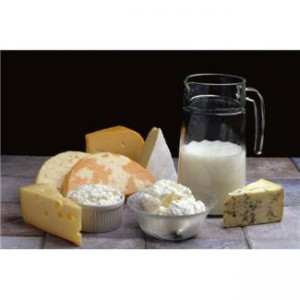 In chemistry, the term physical change implies that a substance is changing form, like when water freezes to form ice. The water has not changed its identity, only its appearance from a liquid to a solid. Physical processes like shaking, hitting or even chewing can help things change their form. For example, when we chew our food, chewing (a physical process) helps us to make food easier to swallow by making it into a liquid. In this activity students will use shaking (a physical process) to transform a liquid (heavy whipping cream) into a solid.
In chemistry, the term physical change implies that a substance is changing form, like when water freezes to form ice. The water has not changed its identity, only its appearance from a liquid to a solid. Physical processes like shaking, hitting or even chewing can help things change their form. For example, when we chew our food, chewing (a physical process) helps us to make food easier to swallow by making it into a liquid. In this activity students will use shaking (a physical process) to transform a liquid (heavy whipping cream) into a solid.
In this activity, students will observe how physical processes like shaking can cause things to change. Materials:
Small glass jar with lid (baby food jars are the best)
Heavy whipping cream
Instructions: 1. Fill each jar about three-quarters of the way full.
2. Tightly seal each jar with its lid.
3. Shake the jar for 10-15 minutes or until the whipping cream has solidified.
How It Works: When the jar is shaken the particles are forced close together. A few particles clump together and soon, with all the shaking more and more particles clump together until most of are in a solid.
Discussion Questions to Ask: What did we add into the jar?
- What did we do to change the heavy whipping cream?
- When was the whipping cream a liquid?
- When was the whipping cream a solid?
Did you know that cooking is a chemical and a physical process? Exploring other food processes like making cheese, baking bread, even making a cake are easy ways to introduce the concept of physical and chemical changes. Chemistry is not just only in the lab or taught during science class. It is important to help young students recognize chemistry concepts inside and outside of the classroom. For more information on how to teach young students about chemical and physical change, visit: http://acswebcontent.acs.org/scienceforkids/index.html#Reactions
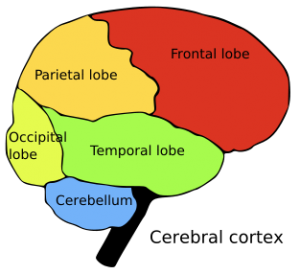 For some of our Fun Learning Science games such as How to Become a Teenage Genius by playing Our Learning Brain, you can visit here:
For some of our Fun Learning Science games such as How to Become a Teenage Genius by playing Our Learning Brain, you can visit here:
http://www.science-lessons.ca/games/brain.html
http://www.science-lessons.ca/games/forceenergy.html
http://www.science-lessons.ca/games/weatherbingo4.html
http://www.literature-enrichment.com/
]]>